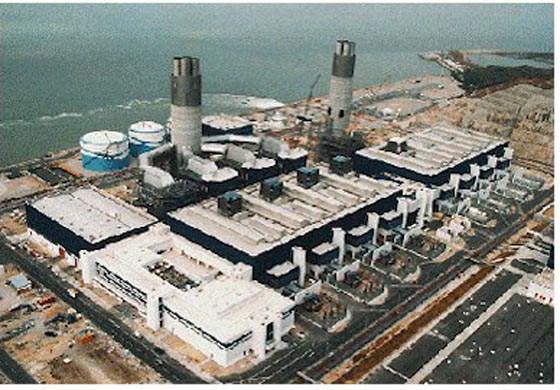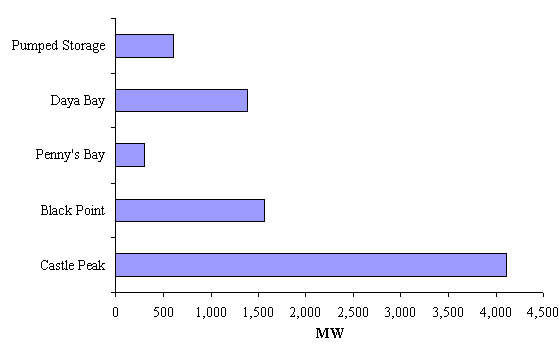The Black Point 2,500MW combined cycle project is the first natural gas-fired facility in Hong Kong. The plant cost around $3 billion, with the lead equipment supply contract going to a partnership of Alstom and General Electric Company.
The project was developed by Castle Peak Power Company. Castle Peak is a long-standing joint venture between US energy group ExxonMobil (60%) and Hong Kong’s largest utility, China Light & Power (40%). The plant supplies all the utility’s power for sales to Kowloon and the New Territories. It also supplies power to its competitor Hong Kong Electric in these territories and exports power to southern China.
Equipment supply partnership
The partnership of Alstom and General Electric Company won the lead equipment supply contract. The scope of supply centred on eight 312.5MW gas turbines, manufactured in Alstom’s French Belfort plant and in GEC’s domestic gas turbine base in Greenville, South Carolina. Alstom also supplied steam turbines, overall plant engineering and balance of plant equipment. GEC’s Schenectady, New York, plant provided generators. The first units went online in 1996 and all were completed by 2004. The total investment is estimated to be HK$24 billion.
When Black Point was planned at the turn of the decade, China Light & Power expected a more explosive growth in demand. It consequently made a large investment to ensure the security of supply into the next century. Black Point served to diversify the group’s power sources, adding large gas CCGT to its own conventional thermal plants and stakes in PRC nuclear and hydro projects. These arguments secured government approval of the plans and orders were placed in 1992.
Plant make-up
The project was an important advance for the heavy duty ‘F’ gas turbine technology the partners had jointly developed. The first two units were delayed by commissioning problems seen in other early ‘F’ projects, but these have been overcome. The project was also a milestone for both groups in their race to secure booming Chinese business.
Alstom also provided electrical, control and instrumentation systems. The heat recovery steam generator supply was subcontracted to Mitsui Babcock. Fujikura of Japan was contracted to build 52km of power distribution lines.
Work on the mammoth project began in early 1993 and site formation work was carried out by Shui On Contractors. Piled foundations for the major building areas were constructed by Franki Contractors. The Maeda-CSCEC joint venture was awarded the main civil works contract. Leighton Contractors (Asia) was awarded contracts for the concrete chimneys and cooling water intake systems. Mouchel Asia was awarded a civil design deal. Other contracts were won by local contractors, including the tenders for the main civil works, the piling and the cool water works.
Natural gas is supplied from Yacheng 13-1, an offshore field near Hainan island. It is transported from there across the South China Sea to Black Point in a 755km pipeline, the world’s second largest subsea system according to the Yacheng sponsors. A separate 100km pipeline serves Hainan. Production began in 1996. The Yacheng project cost around $1 billion. US group Arco manages its operations and has a 34% stake. Exxon and China Light are developing other Chinese power projects to use this field.
Project finance
At a cost of around $3 billion, the Black Point project depended on solid financial backing. Exxon was able to draw on immense resources. It had recorded $2.4 billion in power investments since 1992, mostly for Black Point. Current Black Point commitments are $400 million. Financiers also played a pivotal role. A total financial package of around $2 billion was provided by commercial banks and export credit agencies. Schroders and HSBC were the lead arrangers. Export credits for equipment were secured from France, the UK, and the US.







